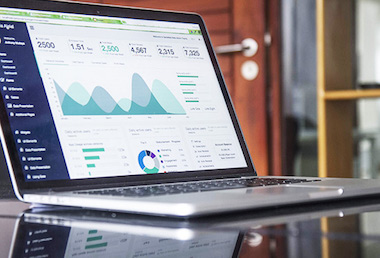15 Essential SEO KPIs Demanding Your Attention in 2020

If you have been in the digital marketplace for any amount of time, you have probably heard about the significance of conquering SEO (not just to survive, but thrive in your business’ niche).
To truly dominate the SEO landscape, you need to understand the KPIs that matter most. Without this, you can’t ascertain if your campaign is performing at a consistently high level.
What Is a KPI?
KPIs (Key Performance Indicators) are measurable and objective factors that will show if your present SEO is accomplishing your goals. Understanding the top KPIs for 2020 will give you the information you need to manage your SEO effectively.
What Are the 15 Top SEO KPIs You Need to Monitor in 2020?
1. Keyword Ranking Increases and Decreases
This is simply a measure of your current rankings on search engines such as Google and Bing. It’s important to monitor if the keywords you are targeting are moving in a positive direction in the SERPs (Search Engine Results Pages).
Your goal is a ranking at #1 or as close to #1 as possible.
Keyword rankings relate directly to your visibility to those searching the Internet for a service or product you offer. This KPI should be monitored weekly.
Small ranking changes are normal and should not cause panic. The Google algorithm frequently changes and causes various ups and downs in rankings. You should watch for significant drops as this could be an indication of a penalty from Google, or a new algorithm update that your website is not optimised for.
Factors that maintain or improve your site’s ranking include:
- Exceptional content
- A website optimised for mobile use
- Page speed
- Good user experience
Tip: Check this list of the most important ranking factors in 2020. Is your website ticking all the boxes?
2. Organic Sessions
The number of organic sessions your website gets is a critical KPI.
Elements that define a session:
- Visit to the website
- User actions while visiting the site
- Exit from the site
Google Analytics can measure your organic sessions and allow you to track your progress, as shown in the video below:
Organic sessions is an essential KPI because it relates directly to the core of SEO. An increase in organic sessions indicates that your website is experiencing an improvement in Google rankings and therfore attracting more traffic.
Ways to boost organic sessions:
- Improve your keyword rankings
- Use an exciting page title to capture a user’s attention
- Use a well written meta description that focuses on core benefits and selling points (as this will improve click through rates)
3. Top Viewed Pages
Your top viewed pages and the most popular pages on your website. These are often pages such as:
- Your homepage
- Product category pages
- Top selling products
- In-depth blog posts about a niche subject
By identifying what pages are popular, and the customer’s intention at that stage of the sales funnel, you can tweak your design/content to improve conversions (and SEO).
4. New Content/Live Pages
People love to be on the cutting edge of all new things. This includes new content on live pages. By tracking this metric, you can calculate how much (or how little) time should elapse between fresh posts. It also plays a large part in discovering the efficiency of your marketing team.
5. Keyword Click Through Rate
The term keyword click-through rate means the number of times your listing on a SERP leads to a potential customer clicking on your listing, as compared to how many times your listing pops up in the results page.
The keyword click-through rate will often pair with the Goal Completion Rate (GCR) as a KPI. When you use the GCR, it assists in finding out the successfulness of the site visits. Simply put, a potential customer clicking on your site is good; a potential customer clicking on your site and subscribing with their email is even better.
Together the keyword click-through rate and the GCR are powerful ways to measure success.
Terms associated with keyword click-through rate
- Organic Search Traffic – When visitors use the search engine results page and click on your website listing
- Click-Through Rate – How many times your listing gets a click as compared to the number of search views
- Goals – The anticipated actions taken by a visitor to your website such as entering an email address, asking a question, or placing an order.
- Completion Rate – Your total number of site visitors divided by the number of goals completed
6. New Backlinks
The days when any old backlink was better than none are long gone. Today’s SEO demands that backlinks are quality, not just quantity. Building links this way can be difficult, but it is essential because Google looks at the backlinks as a way to prove your legitimacy and value to the search results page.
Using professional backlink managing software such as SEOJet is a smart way to ensure relevant links that will build your credibility and raise your SEO ranking.
7. Site Audits
Checking your website’s function and ease of use via a site audit is essential for businesses in 2020. Consumers want fast and reliable webpages; a quick way to send a customer to your competitor is a slow buggy site.
Performing a site audit with a professional program is the best way to see how your website operates. Access to analytics reports and other details is an important part of KPI.
8. Your Website’s Visibility
Face it, your website can be gorgeous, informative, user-friendly, and fast as lightning, but none of that matters if no potential visitors see it.
The SEMrush metric for visibility gives a more accurate picture of your website’s views than looking at the page rankings alone. For example, if you are looking at the rankings for 20 keywords on your site, and you discover that all 20 of these keywords rank at number one, your visibility is 100 per cent.
9. Site Crawl Errors
If a search engine tries to reach a page on your site and fails, you have what is called a crawl error. These matter as a part of KPI because the crawlers need to see your site to evaluate it and because if the crawler cannot connect with a page, there is a strong probability that your customers also cannot connect.
Fortunately, you can check for crawl errors in the Google Search Console. You can test your site’s pages using the tool “Fetch as Google” then use the “fetch and render” option.
10. Your Top Exit Pages
The exit page is whatever page a site visitor is on when they exit your website. While it is true that visitors often exit from the page confirming their purchase or after subscribing to your email list, keep an eye on this number. If you have a page or two with an unusually high number of exits, you likely need optimisation.
To see the data on your exit pages, go to Behavior Reports> Site Content> Exit Pages in Google Analytics.
11. Page Load Time
As far as KPIs go, this is a HUGE one to watch. Your potential customers have less patience than ever. Our world runs in millisecond increments, and we expect immediate results, especially when dealing with technology.
Google has been forthcoming about the importance of speed. They report that the vast majority of searchers will give up on a site that takes more than three seconds to load.
Checking your website’s speed is important. No one will wait to see what you are offering when they can check out your competition’s site immediately. Consider using a site like GTMetrix to test your website speed.
12. Length of the Average Session
It may not be immediately apparent why the amount of time visitors spend on your site is important. However, as a KPI, this metric carries plenty of weight. This is because it points to the quality of your site and its content. A site that is poorly put together and has little depth will not hold a visitor’s attention for long.
Ways to increase the duration of visits to your website:
- Add blog posts that contain quality content
- Make a point to link internally
- Use videos that engage the viewer
- Include interactive elements
- Create a section for comments and ENGAGE with those who use it
13. Pages Per Session
This shows how many pages visitors look at during a session at your website. The number of pages viewed during a session is an indicator of the quality of your site as well as the ability of your site to draw in visitors and create conversions.
One sure way to help on this front is to have CTAs that are noticeable and located on pages that are deeper into your website.
14. Bounce Rate
The bounce rate of your site refers to how many times a visitor loads a page of your website and exits before performing any action.
The percentage of visits with no action matters as a KPI because search engine algorithms place a high value on sites that can give the visitor what they need. A site that offers a visitor no reason to complete a single action appears as a poor-quality site.
15. Leads/conversions
These are the two most essential actions for your website no matter your niche. While a visit is nice, getting leads (any action taken by the visitor that provides you with a point of contact) and a conversion (sale) is optimal.
Examples of leads:
- Provide email (frequently via subscribing to a newsletter or blog)
- Register for a webinar
- Download an eBook
- Completed form to ask a question
- Sale
When you use Google Analytics, you will discover that you can track the leads in numerous ways. Additionally, you are able to set up goal funnels to track the points where your visitors end their interaction on your website.
You owe it to yourself and your business to enter 2020 ready not just to compete, but to leave your competitors in the dust behind you. An SEO audit is a great way to get a baseline of your website performance, so you see your growth and progress.


